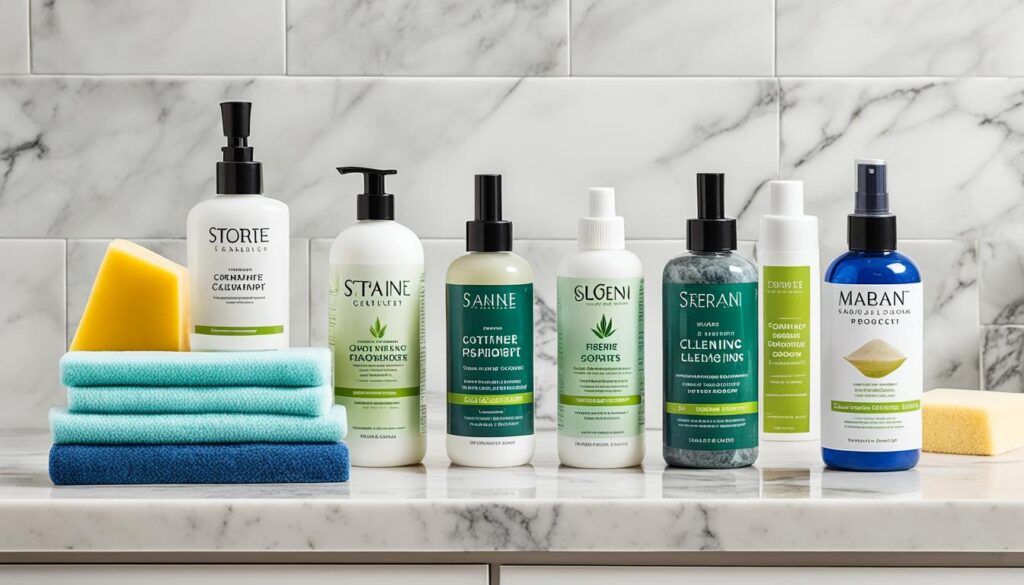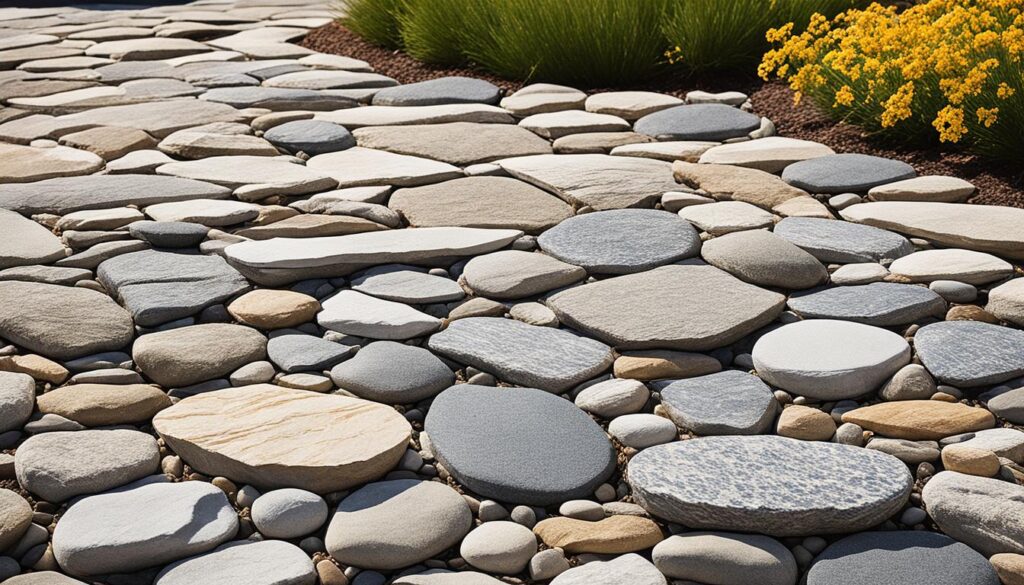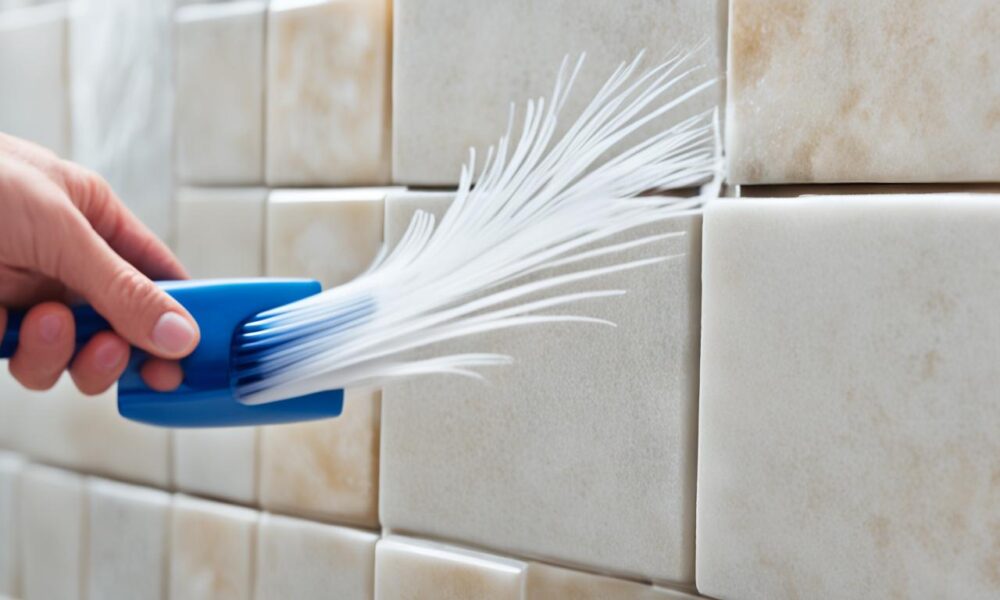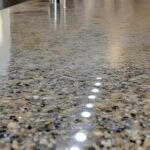Caring for Natural Stone – Easy Maintenance Tips
Proper care and maintenance of natural stone surfaces is essential to preserve their beauty and durability. Understanding the geological classification and composition of your stone will help you choose the right cleaning products. There are three types of natural stone: Sedimentary, Metamorphic, and igneous, each with its own care requirements.
Calcareous stones, such as marble and limestone, are sensitive to acidic solutions, while siliceous stones, like granite and quartzite, are generally resistant to acids. It’s important to use mild, non-acidic cleaners for calcareous stones and avoid acidic cleaners for siliceous stones. Coasters, trivets, and regular dust mopping can help protect the stone from scratches and damage.
Clean stone surfaces with neutral cleaners, stone soap, or mild liquid dishwashing detergent and warm water. Avoid using products with lemon, vinegar, or other acids, as they may dull or etch the stone. Sealing is recommended for some stones as an extra precaution against staining, but it’s important to choose a non-toxic and safe sealer.
Stain identification and removal require different cleaning methods based on the type of stain. Remember to consult with professionals for difficult stains or stone restoration needs.
Key Takeaways:
- Understanding the geological classification and composition of your natural stone is crucial for proper care and maintenance.
- Calcareous stones like marble and limestone are sensitive to acids, while siliceous stones like granite and quartzite are resistant to acids.
- Use mild, non-acidic cleaners for calcareous stones and avoid acidic cleaners for siliceous stones.
- Protect the stone from scratches and damage by using coasters, trivets, and regular dust mopping.
- Clean stone surfaces with neutral cleaners, stone soap, or mild liquid dishwashing detergent and warm water.
Understanding Geological Classification and Composition of Natural Stone
In order to properly care for natural stone, it is essential to understand its geological classification and composition. Natural stone can be categorized into three main geological classifications: Sedimentary, Metamorphic, and Igneous. Each classification is formed through different processes and possesses unique characteristics.
Sedimentary Stones
Sedimentary stones, such as sandstone and limestone, are formed from the accumulation of sediment materials over time. These stones are composed of layers of sediment, which are often visible and give the stone its distinctive appearance. Sedimentary stones are typically softer and more porous compared to other types of natural stone.
Metamorphic Stones
Metamorphic stones, like marble and slate, are formed through the transformation of existing rocks under high heat and pressure. This process causes the minerals within the rock to recrystallize, resulting in a new stone with unique patterns and textures. Metamorphic stones are usually harder and denser than sedimentary stones.
Igneous Stones
Igneous stones, such as granite and basalt, are formed from volcanic activity. These stones are created when molten magma or lava cools and solidifies. Igneous stones are known for their durability and resistance to heat and scratches.
Understanding the composition of natural stone is also crucial in determining the appropriate cleaning products and care methods. Calcareous stones, such as marble and limestone, are primarily composed of calcium carbonate. These types of stones are sensitive to acidic solutions, as the acid can react with the calcium carbonate and cause etching or dulling of the surface. On the other hand, siliceous stones, like granite and quartzite, are mainly composed of silicates and are generally resistant to acids.
When caring for calcareous stones, it is important to use mild, non-acidic cleaners to avoid damaging the surface. For siliceous stones, acidic cleaners should be avoided to prevent any potential etching. Regular maintenance, such as dust mopping and the use of coasters and trivets, can help protect both types of stones from scratches and damage.
Easy Care Tips for Natural Stone
To ensure the longevity and beauty of your natural stone, follow these easy care tips:
- Use coasters under glasses, especially those with alcohol or citrus juices, to prevent etching.
- Place trivets or mats under hot objects to protect the stone from heat damage.
- Regular dust mopping using a non-treated dry dust mop helps remove sand, dirt, and grit that can cause scratching.
- Use mats or rugs at entrances to minimize the amount of sand and dirt on the stone floors.
- Avoid using vacuum cleaners with worn attachments or wheels, as they can scratch the surface.
- In case of spills, blot them immediately with a paper towel and avoid wiping to prevent spreading.
- Clean the area with a neutral cleaner, stone soap, or mild liquid dishwashing detergent and warm water.
- Rinse thoroughly and dry with a soft cloth.
- For wet areas, use a squeegee after each use to minimize soap scum.
- For outdoor areas, flush with clear water and use a mild bleach solution to remove algae or moss.
Cleaning Natural Stone Surfaces
Properly cleaning natural stone surfaces is crucial to maintain their beauty and longevity. By following best practices for natural stone cleaning, you can ensure that your stone surfaces remain pristine. Here are some essential tips:
1. Choose the right cleaners
When cleaning natural stone, it’s important to use neutral cleaners that are specifically formulated for stone surfaces. Opt for a neutral cleaner, stone soap, or mild liquid dishwashing detergent mixed with warm water. These cleaners are gentle yet effective in removing dirt and grime without causing any damage to the stone.
2. Follow the manufacturer’s instructions
Every natural stone cleaner comes with specific instructions regarding its concentration and application. Be sure to read and follow these instructions carefully to achieve the best results. Using the recommended concentration and applying the cleaner correctly will help avoid streaks or film on the stone surface.
3. Use the right tools
When cleaning natural stone floors, use a clean rag mop to ensure an even application of cleaner and to prevent scratching. For other stone surfaces, such as countertops or walls, use a soft cloth to gently clean and wipe away any dirt or residue.
4. Rinse thoroughly
After cleaning the stone surface with the appropriate cleaner, make sure to rinse it thoroughly with clean water. Changing the rinse water frequently during the process will help ensure a thorough clean.
5. Soap scum removal
If you encounter soap scum on your stone surfaces, it’s essential to use a non-acidic soap scum remover or a solution of ammonia and water. Avoid using excessive amounts of ammonia, as it can damage certain types of stone surfaces.
6. Outdoor cleaning
When cleaning natural stone surfaces in outdoor areas, flush the stone with clear water and use a mild bleach solution to remove algae or moss. However, it is crucial to avoid mixing ammonia and bleach, as it can produce toxic gas.
Incorporating these best practices for natural stone cleaning will help you maintain the beauty and integrity of your stone surfaces for years to come.
Choosing the Right Cleaning Products for Natural Stone
When it comes to maintaining the beauty and longevity of your natural stone surfaces, choosing the right cleaning products is crucial. Many suppliers offer specialized natural stone cleaning products that are safe and effective. To ensure the best care for your stone, follow these guidelines:
Avoiding Acidic Cleaners
To protect your stone from damage and dullness, it is essential to avoid acidic cleaners. Products that contain lemon, vinegar, or other acids can etch and harm the stone’s surface. Instead, opt for mild, non-acidic cleaners specifically designed for natural stone.
Selecting Non-Abrasive Cleaners
Scouring powders or creams with abrasives can scratch certain types of natural stone. To prevent any harm, choose non-abrasive cleansers that are gentle on the stone while effectively removing dirt and grime.
Tip: Be cautious of rust removers that contain hydrofluoric acid, as this type of acid can attack all types of natural stone. It’s also crucial to avoid mixing ammonia and bleach, as it produces a dangerous gas.
Manufacturer Instructions and Recommendations
Always read and follow the manufacturer’s instructions for usage and concentration when using cleaning products. Different stone types may have specific cleaning requirements, so it’s important to consult your stone supplier or sealing manufacturer for their recommendations.
| Cleaning Product | Features | Usage |
|---|---|---|
| Neutral Cleaner | Mild and non-acidic | Use for regular cleaning |
| Stone Soap | Gentle and non-abrasive | Recommended for routine cleaning |
| Mild Liquid Dishwashing Detergent | Non-abrasive and effective | Safe for regular cleaning |
By carefully selecting non-toxic and safe cleaning products for your natural stone, you can maintain its beauty and ensure its long-term durability. Remember to follow proper cleaning methods and consult professionals for difficult stains or stone restoration needs.

Sealing Natural Stone for Added Protection
Sealing natural stone is a widely recommended practice to enhance its durability and protect it from stains, although not all types of stone require sealing. While sealing does not guarantee complete stain resistance, it significantly improves the stone’s resistance to staining, making it easier to maintain over time.
Choosing the right stone sealer product is essential to ensure effective protection. There are different types of sealers available, each designed for specific stone types and applications. The two most common types of stone sealers are penetrating/impregnating sealers and stone enhancer sealers.
Penetrating/Impregnating Sealers:
Penetrating/impregnating sealers are recommended for both interior and exterior stone surfaces. These sealers penetrate the stone pores to create a protective barrier without altering its natural appearance. They can be water-based or solvent-based, depending on the specific stone and project requirements. With proper application and maintenance, these sealers can provide long-lasting protection for several years.
Stone Enhancer Sealers:
Stone enhancer sealers are also penetrating/impregnating sealers, but they are formulated to darken and enhance the natural color of the stone. They are often used to bring out the richness and depth of certain stone varieties. However, it’s important to note that stone enhancer sealers may darken seams and joints, and thus their use should be considered carefully.
The frequency of sealing depends on various factors such as the type of stone, its porosity, and the level of exposure to potential staining agents. To determine the appropriate sealing schedule, it is advisable to consult with your stone supplier or the manufacturer of the sealing product.
Here’s an example of a proper table to help you understand the different types of stone sealer products:
| Stone Sealer Type | Description |
|---|---|
| Penetrating/Impregnating Sealers | These sealers penetrate the stone pores to create a protective barrier without altering the natural appearance of the stone. They are available in water-based or solvent-based formulations. |
| Stone Enhancer Sealers | Stone enhancer sealers darken and enhance the natural color of the stone. They are used to bring out the richness and depth of certain stone varieties but may darken seams and joints. |
| Other Specialty Sealers | There are specialized sealers available for specific stone types or applications, such as anti-slip sealers or acid-resistant sealers. |
Sealing provides an additional layer of protection for your natural stone, helping you safeguard its beauty and longevity. Remember to consider the specific requirements of your stone type and seek professional advice if needed. With proper sealing and regular maintenance, your natural stone surfaces will continue to impress and serve you well for years to come.
Stain Identification and Removal for Natural Stone
In order to effectively remove stains from natural stone, it is essential to accurately identify the type of stain. Stains on natural stone can be categorized into different types, including oil-based, organic, metallic, biological, ink-based, paint-based, or acid-based stains. By carefully observing the stain’s location, color, shape or pattern, and the surrounding area, you can determine the type of stain and take appropriate action.
Oil-based stains: These stains, such as grease or cooking oil, can be dissolved using a soft, liquid cleanser. Recommended options include household detergent, mineral spirits, or acetone. Apply the cleanser to the stained area, allow it to sit for a few minutes, and then gently wipe away the stain with a clean cloth.
Organic stains: Stains caused by substances like coffee or wine can often fade over time or be removed using a solution of hydrogen peroxide and ammonia. Mix equal parts of hydrogen peroxide and ammonia, apply it to the stained area, let it sit for a few minutes, and then clean off the stain with a cloth.
Metallic stains: Rust or copper stains may require the use of a poultice. A poultice is a paste-like substance that is applied to the stain and left to sit, drawing out the metallic contaminants. There are various commercially available poultice products designed specifically for removing metallic stains from natural stone.
Biological stains: Stains caused by algae or mildew can be cleaned with a diluted cleaning solution. A mixture of ammonia, bleach, or hydrogen peroxide, combined with water, can effectively remove biological stains. Apply the diluted solution to the stain, let it sit for a few minutes, and then carefully clean the area.
Ink stains: Ink stains can be treated differently based on the color of the stone. For light-colored stones, bleach can be used to remove ink stains. On dark-colored stones, lacquer thinner or acetone are more appropriate options. Apply the chosen product to a clean cloth, gently rub the stained area, and continue until the ink stain is removed.
Paint stains: Paint stains should be treated promptly with a suitable cleaning product. Lacquer thinner or a heavy liquid paint stripper can effectively remove paint stains from natural stone. Apply the product to a cloth or sponge, carefully rub the stained area, and repeat as necessary until the paint is completely removed.
Water spots and rings: Stubborn water spots and rings can be buffed with a dry steel wool pad. Gently rub the stained area with the steel wool, applying light pressure, until the water spots or rings disappear. Be cautious not to apply excessive force, which could damage the stone.
For more severe damage, such as etch marks or deep scratches, it is advisable to seek professional assistance from a stone restoration specialist. They have the expertise and appropriate tools to restore the stone’s original beauty.
Stain Removal Methods for Natural Stone
Here is a summarized overview of stain removal methods for different types of stains:
| Stain Type | Recommended Cleaning Method |
|---|---|
| Oil-based stains | Soft, liquid cleanser (household detergent, mineral spirits, or acetone) |
| Organic stains | Solution of hydrogen peroxide and ammonia |
| Metallic stains | Use of a poultice |
| Biological stains | Diluted cleaning solution (ammonia, bleach, or hydrogen peroxide) |
| Ink stains | Bleach on light-colored stones; lacquer thinner or acetone on dark-colored stones |
| Paint stains | Lacquer thinner or heavy liquid paint stripper |
| Water spots and rings | Dry steel wool buffing |
Remember, prompt action is crucial when dealing with stains on natural stone. The sooner you address the stain, the higher the chances of successful removal without causing any damage to the stone. If you encounter persistent or severe stains, it is always best to consult a professional stone restorer for expert assistance.
Special Care for Natural Stone Veneers and Landscaping
Natural stone veneers and landscaping require special care to preserve their beauty. Regular cleaning with soap and water is usually sufficient for maintaining these surfaces. Avoid using products with acid, as they can cause damage to the stone. Power washing can be used for deeper cleaning, but caution should be exercised to avoid damaging joints filled with polymeric sand. Always be cautious of the force of the power washer and avoid putting yourself or others in the path of the stream. Specialized cleaning products may be needed for specific issues such as staining from food, moss and mildew growth, or efflorescence. For food stains, use cleaners specifically designed for grease and oil removal. Organic cleaners can help with moss and mildew, while efflorescence cleaners are effective for removing the white calcium substance caused by moisture under or behind the stone. Professional stone restoration may be necessary for more severe damage or wear.
To ensure the longevity and beauty of natural stone veneers and landscaping, here are some key care tips to keep in mind:
- Clean regularly with soap and water to remove surface dirt and debris.
- Avoid using acidic products that can damage the stone’s surface.
- Use caution when power washing to avoid damaging joints and causing injury.
- Consider specialized cleaning products for specific issues such as staining, moss, mildew, or efflorescence.
- Consult professionals for stone restoration needs or more severe damage.
“Proper care and maintenance are essential to preserve the beauty and durability of natural stone veneers and landscaping.”
Power Washing Natural Stone: Proceed with Caution
Power washing can be an effective method for deep cleaning natural stone veneers and landscaping. However, it’s important to exercise caution to prevent damage. The force from a power washer can be too intense for certain stones or joints filled with polymeric sand. When power washing, always:
- Adjust the pressure to a lower setting to avoid excessive force on the stone surface.
- Keep the nozzle at a safe distance from the stone to prevent accidental damage.
- Avoid putting yourself or others in the path of the stream.
By following these precautions, you can safely and effectively use a power washer to clean natural stone veneers and landscaping.
The Durability of Natural Stone and Avoiding Common Pitfalls
Natural stone is renowned for its exceptional durability, making it a popular choice for various applications. However, to maximize its longevity and prevent damage, it is crucial to be aware of common pitfalls and follow proper care and maintenance practices. This section highlights essential considerations to ensure the optimal preservation of natural stone.
Avoiding Acid-Based Products
One common mistake that can significantly damage natural stone is the use of acid-based cleaning products. Acidic solutions, such as muriatic acid, have the potential to burn and discolor the stone, diminishing its visual appeal and structural integrity. This is especially true for calcareous stones, such as marble and limestone, which are particularly sensitive to acid exposure. Therefore, it is vital to avoid using acidic cleaners and opt for mild, non-acidic alternatives suitable for the specific type of stone.
Mixing Stone Types and Considerations
When designing with natural stone, it is essential to consider the different application limitations, abrasion resistance levels, and densities of various stone types. Mixing different stone types without understanding these factors can lead to challenges in terms of wear and maintenance. To ensure long-term durability and consistent maintenance practices, it is advisable to thoroughly research and understand the characteristics of each stone type before incorporating them into a design project.
Uniformity and Natural Variations
As a product of nature, natural stone displays inherent variations in color, veining, and texture. These unique characteristics add to its aesthetic appeal, but they can also pose challenges when it comes to achieving uniformity in large-scale projects. To mitigate this, it is recommended to purchase an adequate quantity of stone at the beginning of a project to ensure consistency and an aesthetically pleasing result. Additionally, it is important to be aware that some light-colored marbles and onyxes may exhibit translucence due to their crystal structure, which should be embraced as a natural attribute rather than considered a defect.
Professional Assistance and Regular Maintenance
While natural stone is exceptionally durable, it may require professional assistance for more severe damage or wear. Stone restoration professionals possess the expertise and specialized tools to effectively restore the stone’s original beauty. Additionally, regular maintenance practices, such as cleaning with appropriate products and promptly addressing stains, are crucial for preserving the durability and aesthetic appeal of natural stone surfaces.
By avoiding common pitfalls, following proper care practices, and seeking professional assistance when necessary, it is possible to maintain the durability and beauty of natural stone for years to come.

Conclusion
In conclusion, caring for natural stone surfaces is essential for maintaining their beauty and longevity. By understanding the geological classification and composition of your stone, you can choose the right cleaning products and methods to ensure proper care. Following easy care tips, such as using coasters and trivets, dust mopping regularly, and cleaning with neutral cleaners, will help protect your stone from scratches and damage.
However, when dealing with difficult stains or when restoration is needed, it is advisable to seek professional help. Stone restoration experts have the knowledge and experience to effectively remove stubborn stains and revive the natural beauty of your stone surfaces. They can also provide guidance on proper sealing techniques to enhance the stone’s resistance to staining.
Natural stone is a valuable investment that adds elegance and value to any space. With regular maintenance and professional assistance when needed, you can ensure that your natural stone surfaces remain beautiful for years to come. So, take care of your natural stone, and it will reward you with its timeless appeal and durability.



